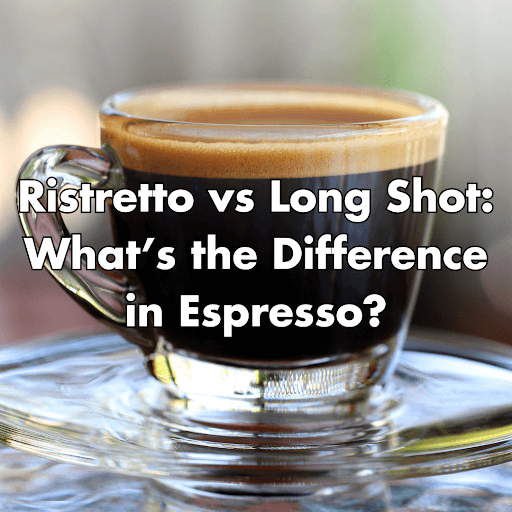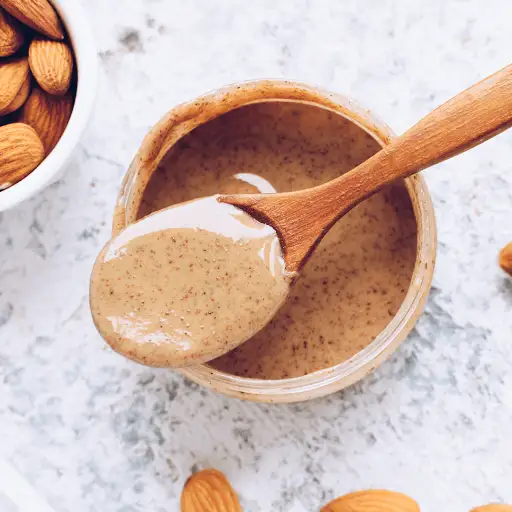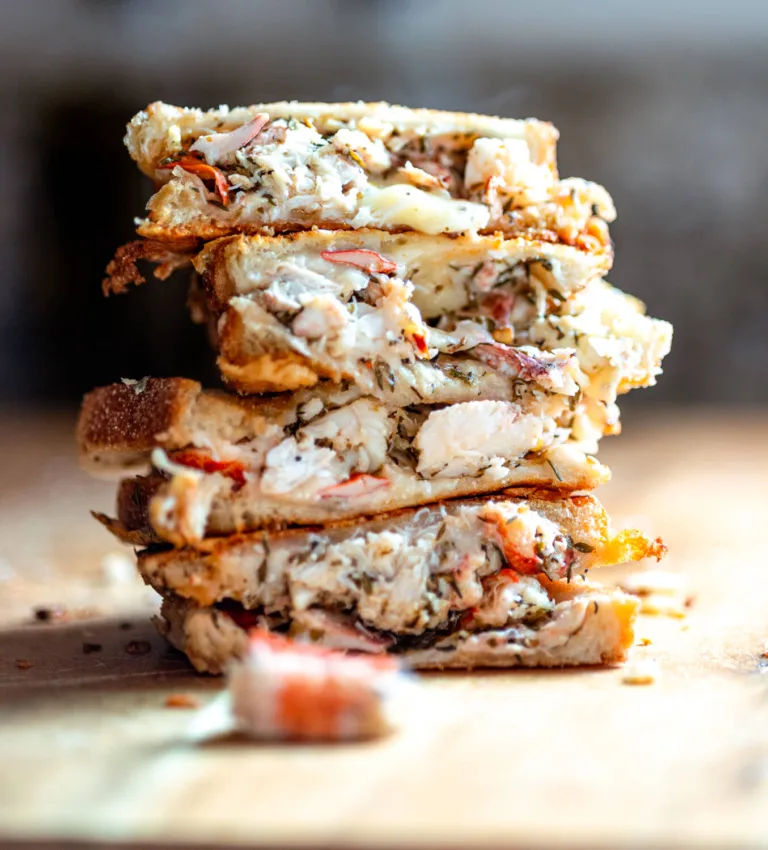Have you ever stood in line at a coffee shop, staring at the menu, wondering what all those coffee terms mean?
Meanwhile, the person ahead of you casually orders a “ristretto shot in their flat white.”
And you might have wondered—what in the world is a ristretto?
And how does it differ from a long shot?
Well, my fellow coffee lovers, I’m here to break it all down for you.
Whether you’re a coffee fanatic or someone who just enjoys a daily dose of caffeine, this post should help you learn a thing or two.
Understanding the Basics: What Is a Shot of Espresso?
Before we get into the nitty gritty with ristretto and long shots, let’s start with the basics.
A standard espresso shot—sometimes called a “regular shot of espresso”—uses about 7 to 9 grams of coffee grounds and around 1 ounce (30 ml) of water.
This shot is brewed under high pressure (about 9 bars) using an espresso machine. The result?
A concentrated, bold, and complex drink that forms the base of countless coffee drinks from flat whites to cappuccinos.
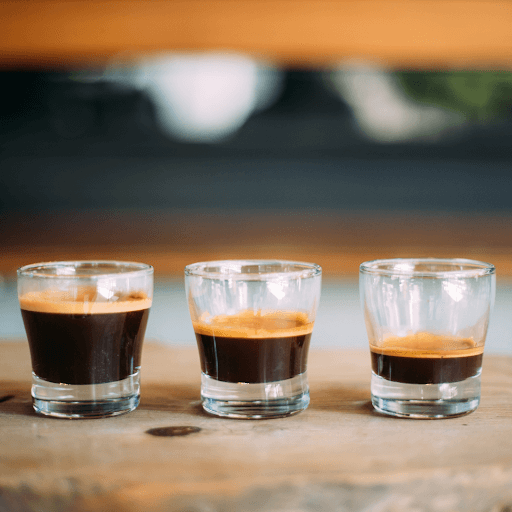
What Is a Ristretto Shot?
The word ristretto is an Italian term that literally means “restricted” or “narrow.” And that’s exactly what it is: a restricted shot of espresso that uses less water and a shorter extraction time to produce a smaller, more concentrated shot.
A ristretto shot is essentially a shorter version of the standard espresso. We use the same amount of coffee grounds (roughly 18-20 grams for a double shot, which is common), but the extraction process is deliberately cut short.
Instead of the usual 25-30 seconds, a shorter extraction time of around 15-20 seconds is employed. This means less water is pushed through the grounds, resulting in a smaller yield, typically around 0.75-1 ounce (22-30 ml) for a double ristretto (often just called a ristretto doppio).
- Amount of Water: Less water (about 0.5-0.75 ounces)
- Brewing Time: Shorter extraction time (15-20 seconds)
- Grind Size: Finer grind
- Flavor Profile: Sweeter taste, more concentrated flavor, lower bitterness, and lower acidity
Think of a ristretto as the espresso shot’s intense little sibling. It’s bold, rich, and often described as having an intense flavor without the bitter bite you sometimes get with a regular espresso shot.
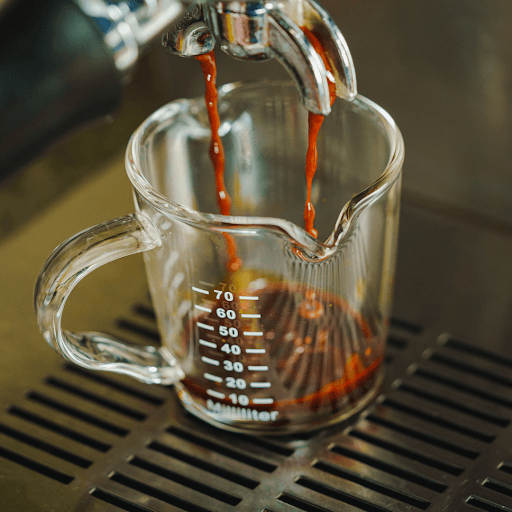
What Is a Long Shot (Lungo)?
Then, we have the lungo—another Italian word, this time meaning “long.” A long shot (or lungo) uses more water and a longer extraction time to produce a larger, milder espresso shot.
- Amount of Water: About 2 ounces of water
- Brewing Time: Longer extraction time (35-40 seconds)
- Grind Size: Coarser grind
- Flavor Profile: Milder taste, more bitter, thinner body, higher caffeine content
A lungo shot is great if you enjoy a larger cup of espresso with a gentler, more diluted flavor. But beware—while it tastes milder, it can have a higher caffeine content due to the longer brewing process.
To break it down…
Water Used:
- Ristretto Shot: Less water
- Long Shot (Lungo): More water
Extraction Time:
- Ristretto Shot: Shorter extraction time
- Long Shot (Lungo): Longer extraction time
Grind Size:
- Ristretto Shot: Finer grind
- Long Shot (Lungo): Coarser grind
Flavor:
- Ristretto Shot: Sweeter and richer flavor
- Long Shot (Lungo): Milder and slightly bitter flavor
Caffeine Content:
- Ristretto Shot: Less caffeine
- Long Shot (Lungo): More caffeine
Texture:
- Ristretto Shot: Creamy and concentrated texture
- Long Shot (Lungo): Thinner, more watery texture

Which One Should You Choose?
It really comes down to personal preference and the type of espresso drink you’re making.
- Choose a Ristretto If: You love bold, rich flavors with a velvety smooth finish. Great for flat whites, cortados, or just sipping on its own.
- Choose a Lungo If: You’re after a larger cup with a more diluted flavor and a little extra caffeine to jumpstart your day.
How to Brew These Espresso Variations at Home
If you have an espresso machine at home, you’re in luck! Making either version is simple once you understand the brewing process.
For Ristretto:
- Use a finer grind size for the coffee grounds.
- Brew with half the amount of water you’d normally use (about 0.5-0.75 ounces).
- Aim for a shorter extraction time—15 to 20 seconds is ideal.
For Long Shot (Lungo):
- Use a coarser grind size than you would for a regular espresso.
- Brew with about double the amount of water (2 ounces).
- Let the shot run for about 35 to 40 seconds.
Tip: For best results, use freshly ground beans and experiment with different roast levels. Darker roasts tend to pair beautifully with ristrettos, while lighter roasts shine in a lungo shot.
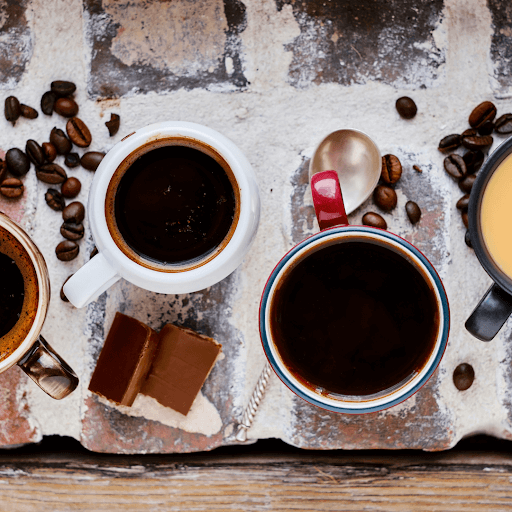
Grind Size and Roast Level
But wait, do these two things really matter?
Absolutely! The roast level and type of coffee beans you use will significantly impact the final taste of any type of espresso, including ristretto and lungo.
Darker roasts tend to have more soluble compounds, which can be extracted more quickly. This means a ristretto made with a darker roast might be particularly intense and could even lean towards bitterness if not dialed in correctly. A lungo with a darker roast could easily become overly bitter.
Lighter roast beans and medium roast varieties often have a wider range of flavor compounds that are extracted at different rates. A ristretto made with a lighter roast beans might highlight its bright acidity and sweetness, while a lungo could showcase a broader spectrum of flavors, though still with the potential for increased bitterness towards the end of the extraction. The best results often come from understanding how your chosen type of bean and roast level behave under different extraction times.
If you’re wondering why grind size and roast level matter so much, here’s the quick explanation:
- Finer Grind Size: Slows down water flow, perfect for short extractions like ristrettos.
- Coarser Grind Size: Speeds up water flow, ideal for longer extractions like lungos.
- Roast Level: Dark roasts bring out bold, chocolatey notes. Lighter roasts offer brighter, fruitier flavors—often more noticeable in a lungo shot.
The Science Behind the Extraction
Ever wonder why simply changing the water and time can lead to such different tastes? It all boils down to what’s being extracted from those precious grams of coffee at different stages of the brewing process.
When hot water first hits the amount of ground coffee, it starts dissolving the most easily accessible compounds.
These are often the bright acids, the sugars, and the aromatic oils that contribute to the nuanced flavor profile we crave.
This initial phase, which is intentionally cut short for a ristretto shot, captures these desirable elements, leading to its characteristic sweeter taste and concentrated flavor.
As the extraction process continues for a regular shot of espresso and even longer for a long shot espresso, the water starts to pull out less soluble compounds.
These later extractions often include more bitter plant fibers and less desirable acids. This is why a longer extraction time can sometimes lead to a more pronounced bitter taste in a lungo shot.
Think of it like steeping tea – the first steep yields the brightest flavors, while a prolonged steep can bring out bitterness. The shorter brew time of a ristretto aims to capture that initial burst of goodness, leaving behind the potential for bitterness.
Beyond Ristretto and Lungo: Exploring Other Espresso Variations
Don’t think of ristretto and lungo as the only deviations from a regular shot of espresso! The realm of espresso types is vast and inviting.
Factors like the amount of coffee grounds, the grind size, water temperature, and the duration of the extraction process all contribute to a myriad of potential flavor profiles. So, be curious!
Ask your barista about other espresso shot variations or experiment with your own espresso machine. Discovering your personal preference and the best way to enjoy the incredible versatility of espresso is a rewarding journey for every coffee lover.
Frequently Asked Questions (FAQs)
Q: Can You Make a Ristretto or Lungo with a Pod Machine?
A: Absolutely! Machines like Nespresso often have programmed buttons for these variations. Just check the settings and adjust the shot size accordingly. For a more hands-on approach, using a manual espresso machine will give you better control over the process.
Q: Does a Ristretto Have Less Caffeine Than a Long Shot?
A: Yes, generally. Even though ristretto is more concentrated, the shorter brew time extracts less caffeine. A lungo shot, with its longer extraction, pulls more caffeine from the grounds.
Q: Can I Order a Ristretto at Any Coffee Shop?
A: Most specialty coffee shops will happily make a ristretto if you ask. It’s a bit less common at larger chains, but some—like Starbucks—do offer it as a customization option.
Q: Is a Ristretto or Lungo Better for Iced Espresso Drinks?
A: If you want a bold flavor that stands up to ice and milk, go for a ristretto. If you’re looking for something more mellow and refreshing, a lungo is a better option.
Q: Can You Combine Ristretto and Lungo Shots in the Same Drink?
A: Sure! This is your coffee journey—feel free to experiment. Mixing shot types can create unique flavors and textures, perfect for crafting your own signature drink.
Q: Can I use the same coffee beans for both a ristretto and a long shot?
A: Yes, but results will vary. Use a finer grind and medium to dark roasts for ristretto, and a coarser grind with lighter roasts for long shots. Adjusting grind and roast helps highlight the best flavors.
Tips & Tricks for the Perfect Shot
- Use a Scale: Measuring the grams of coffee grounds helps ensure consistency.
- Try a Ristretto Doppio: That’s just a fancy way of saying a double ristretto shot—twice the flavor, twice the fun.
- Mind the Water Temperature: Hot water is essential, but too hot (above 205°F) can over-extract and make your espresso bitter.
- Try Different Beans: The type of coffee beans you use—light roast, medium roast, or dark roast—will dramatically change the flavor profile.
Like most things in the world of coffee, it all comes down to what you enjoy. Some mornings, I’m all about that bold, concentrated ristretto shot to kick things into high gear.
Other days, a mellow lungo feels just right, especially when I’m easing into a slow Sunday morning with a larger cup and a good book.
If you’re feeling adventurous, try brewing both side by side and do a little taste test. You might just discover a new favorite way to enjoy your daily espresso.

